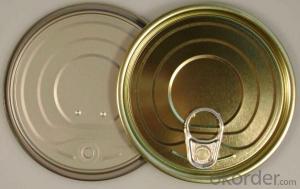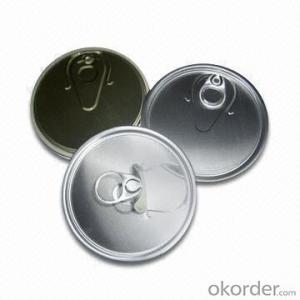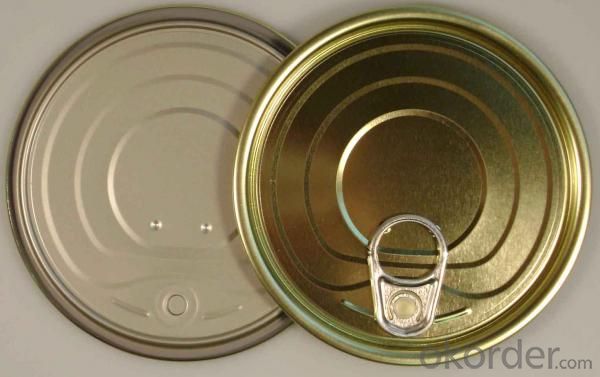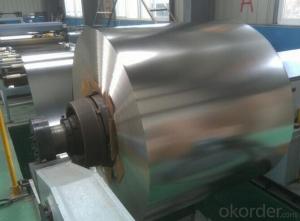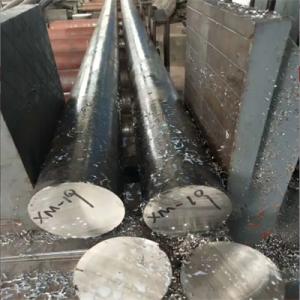Richmond Castle Tinplate Easy Open End Aluminum Material Best Quality
- Loading Port:
- China main port
- Payment Terms:
- TT OR LC
- Min Order Qty:
- 100000 pc
- Supply Capability:
- 10000000 pc/month
OKorder Service Pledge
OKorder Financial Service
You Might Also Like
Brief Details
tuna fish can
1.Tinplate 401#
2.Dia:98.9mm
3.Full open
Specifications
Name | tuna fish can |
Item No. | 401# |
Shape/type | Round |
Size(mm) | Dia 98.9 |
Coating | White porcelain |
Material | Tinplate |
Pcs/20 GP’ | 950,000 Customize packing: as clients’ requests. |
Features | 1.Used for packaging of tomato paste,jam,salad…etc. 2.Have illustration printing on the lid. 3.Coating can be according to the customer required. |
Our Workshop

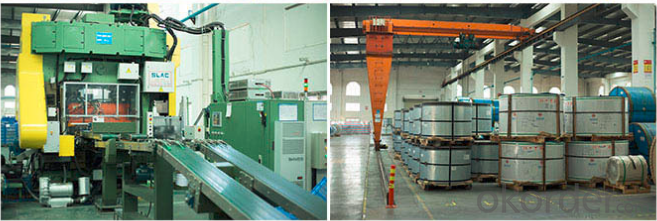
FAQ
1.Q: What is the material and monthly output of EOE?
We can offer both tinplate and aluminum material made EOE, our output reaches more than 1000000000pcs per month.
2.Q:Could you offer samples for our testing?
YES, we could offer sample, but we hope you send us testing report at early time;
3. Q:Can you make new mold with customized size?
YES, We can make new mold for our cutomer, if the qty reach our requirement.
4.Q. Could you give me more information about your company?
Yes, We are one largest state owned company in China, also we are Fortune Global 500 company in the world, our company reputation is good.
5.Q. Which payment term you accept?
We could accept TT, LC at sight, DP, LC after sight etc.
- Q:How is tinplate affected by different types of dairy products?
- Tinplate, which is a thin steel sheet coated with a layer of tin, can be affected by different types of dairy products due to their varying acidity levels and chemical composition. Dairy products such as milk, cream, and butter, which have a neutral pH, generally do not cause significant reactions with tinplate. However, highly acidic dairy products like yogurt or buttermilk can corrode the tin coating, leading to discoloration or off-flavors in the food. It is important to use proper packaging materials, such as food-grade plastic or glass, for storing and transporting highly acidic dairy products to prevent any unwanted reactions with tinplate.
- Q:How to distinguish galvanized plate and tin plate
- General galvanized sheet used in home appliances and electronics industry, thicker. Tin plate, tinplate, used in packaging industry, thinner.
- Q:Can tinplate be used for packaging heavy products?
- Yes, tinplate can be used for packaging heavy products. Tinplate is a durable material made of steel coated with a thin layer of tin, providing strength and protection. It is commonly used for packaging heavy items such as canned foods, beverages, and industrial products due to its ability to withstand pressure and protect the contents from damage.
- Q:Can tinplate be used for construction applications?
- Yes, tinplate can be used for construction applications. Tinplate, which is a thin steel sheet coated with a layer of tin, offers several advantages such as strength, durability, and corrosion resistance. It is commonly used in construction for various applications including roofing, siding, wall panels, and decorative elements. Additionally, tinplate can be easily formed and shaped, making it suitable for different construction needs.
- Q:What are the main differences between tinplate and tinplate laminates in terms of product visibility?
- The main difference between tinplate and tinplate laminates in terms of product visibility is that tinplate is a single-layer material made solely of tin, while tinplate laminates are composed of multiple layers, typically tin and another material such as paper or plastic. This means that tinplate laminates offer less product visibility compared to tinplate, as the additional layers can obstruct the view of the product inside the packaging.
- Q:Can tinplate be used for agricultural applications?
- Yes, tinplate can be used for agricultural applications. It is commonly used for packaging agricultural products such as canned food, beverages, and other perishable goods. Tinplate provides a protective barrier against moisture, air, and light, ensuring the quality and longevity of agricultural products. Additionally, it is durable, recyclable, and resistant to corrosion, making it suitable for various agricultural needs, including storage containers, equipment, and agricultural machinery components.
- Q:How is tinplate coated for electrical enclosures?
- Tinplate is commonly coated for electrical enclosures through an electroplating process, where a thin layer of tin is deposited onto the surface of the base metal. This electroplating process helps to enhance the corrosion resistance and conductivity of the tinplate, making it suitable for use in electrical enclosures.
- Q:What are the benefits of using tinplate for kitchenware?
- The benefits of using tinplate for kitchenware include its durability, resistance to corrosion, easy maintenance, and ability to preserve food quality. Tinplate is also lightweight, making it convenient for everyday use in the kitchen.
- Q:What are the typical manufacturing processes for tinplate products?
- The typical manufacturing processes for tinplate products include coil preparation, coil cleaning, annealing, coating, temper rolling, cutting, and forming.
- Q:What are the food safety regulations for tinplate packaging?
- Food safety regulations for tinplate packaging vary depending on the country and region. However, some common regulations include ensuring that the tinplate is food grade and does not contain harmful chemicals or substances that can transfer to the food. Additionally, proper sterilization and hygiene practices during the manufacturing process are essential to prevent contamination. Food safety regulations also often require the use of protective coatings or linings on the tinplate to prevent reactions with the food and to maintain its quality and safety. Regular testing and monitoring of tinplate packaging are also important to ensure compliance with these regulations.
1. Manufacturer Overview |
|
|---|---|
| Location | |
| Year Established | |
| Annual Output Value | |
| Main Markets | |
| Company Certifications | |
2. Manufacturer Certificates |
|
|---|---|
| a) Certification Name | |
| Range | |
| Reference | |
| Validity Period | |
3. Manufacturer Capability |
|
|---|---|
| a)Trade Capacity | |
| Nearest Port | |
| Export Percentage | |
| No.of Employees in Trade Department | |
| Language Spoken: | |
| b)Factory Information | |
| Factory Size: | |
| No. of Production Lines | |
| Contract Manufacturing | |
| Product Price Range | |
Send your message to us
Richmond Castle Tinplate Easy Open End Aluminum Material Best Quality
- Loading Port:
- China main port
- Payment Terms:
- TT OR LC
- Min Order Qty:
- 100000 pc
- Supply Capability:
- 10000000 pc/month
OKorder Service Pledge
OKorder Financial Service
Similar products
New products
Hot products
Hot Searches
Related keywords
